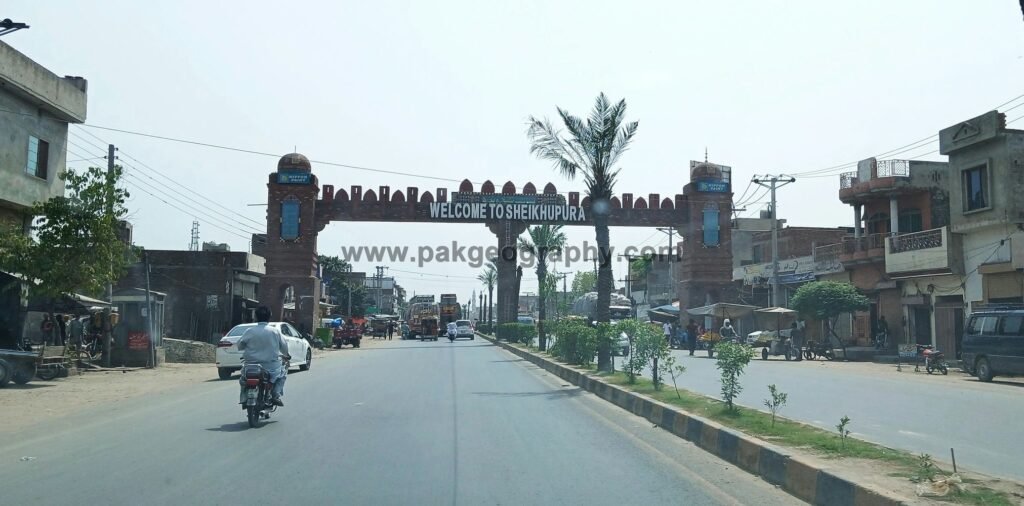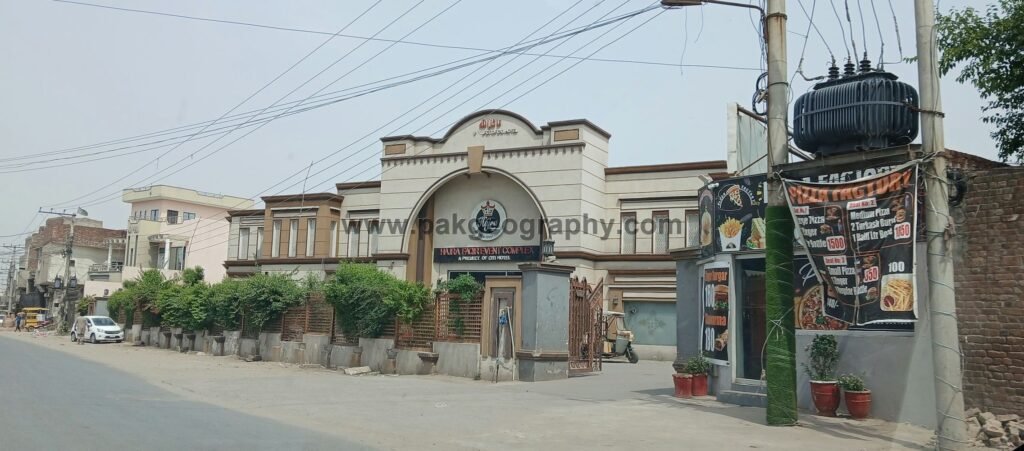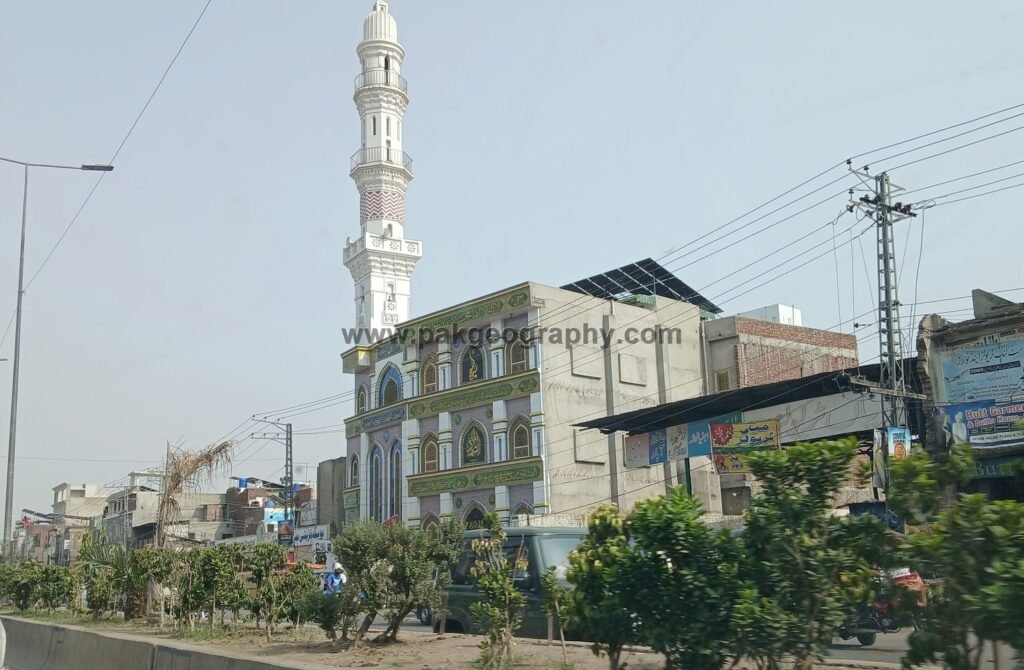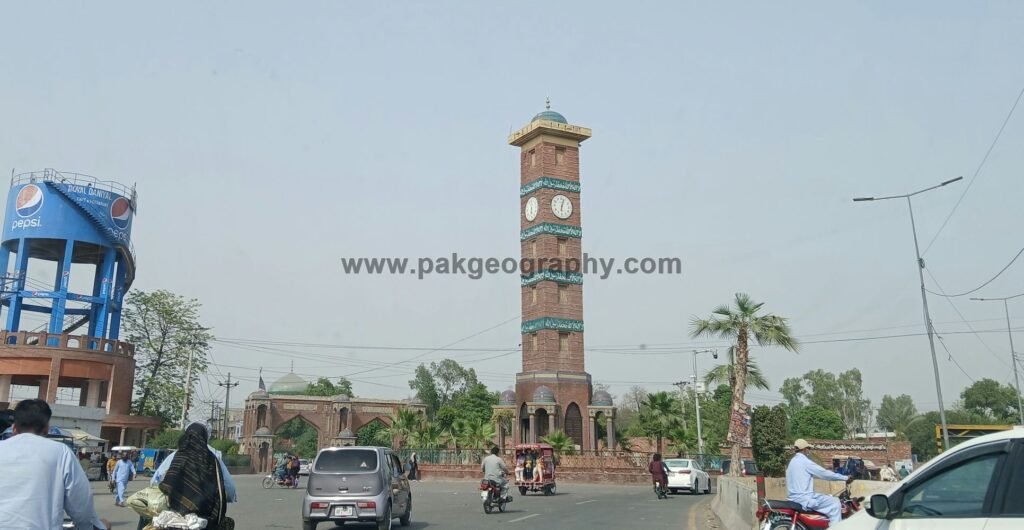Sheikhupura is a city and district in Punjab Province of Pakistan. It is known for its rich history and culture. Emperor Jahangir founded this city in 1607 and due to its long founding history, Sheikhupura has seen the rise and fall of Mughal, Sikh, and British rule over the years. Emperor Jahangir built Hiran Minar in remembrance of his favorite antelope near this city. It shows his love for nature and architecture.
Sheikhupura History
Founding and Mughal Era:
Imagine returning to the early 17th century, when the Mughal Empire flourished. Emperor Jahangir, a nature and architectural lover, founded a city as his hunting getaway in 1607. When first founded, this city was called “Jahangirpura” and later became known as Sheikhupura, derived from the emperor’s nickname, Sheikhu.
Jahangir built Sheikhu pura Fort to match his hunting retreat. In 1607, Jahangir’s diaries, called the Tuzk-e-Jahangiri, mention Sikandar Moeen building it during a hunting trip. The fort’s strong and breathtaking construction shows Mughal architectural brilliance.
Sikh and British Periods:
As the Mughal Empire declined in the 18th century, the Sikh Confederacy took over Sheikhupura and other provinces. The fort, which used to represent Mughal power, became an important resource for the Sikhs. Sikh Empire commander Maharaja Ranjit Singh gave his wife, Datar Kaur, the fort as a “Jagir” (land gift), who lived there till her death in 1838. She restored the fort and set up frescoed haveli.
After defeating the Sikhs, the British East India Company seized Punjab in 1849. After that, it became a district in 1920 to start a new administrative journey. It transformed from a Mughal hunting paradise to a major city, displaying its varied cultural and political influences.



















































Tehsils of Sheikhupura District
This district has following five tehsils:
- Sheikhupura
- Ferozwala
- Mureedkay
- Safdarabad
- Sharaqpur
Sheikhupura District Population
Sheikhupura District has population of 4,049,418, according to the 2023 census. With 2,079,378 males and 1,969,434 females, the gender ratio is 105.58 males to 100 females.
The district’s literacy rate is 68.88%. Examining the male literacy rate of 72.09% and the female literacy rate of 65.46% shows continued attempts to narrow the education gender gap. 1
Hiran Minar, Sheikhupura

Hiran Minar, located in Sheikhupura, Punjab, stands as a remarkable testament to Mughal architecture and Emperor Jahangir’s profound affection for nature. Constructed in the early 17th century, this unique complex was built to honor Jahangir’s beloved pet antelope, Mansraj.
The centerpiece of the complex is a 30-meter-high minaret, erected in 1606 CE, serving as a memorial to Mansraj. This tower is adorned with intricate carvings and calligraphy, exemplifying the exquisite craftsmanship of the Mughal era. The minaret’s octagonal base transitions into a circular shaft, culminating in a chhatri (dome-shaped pavilion), a distinctive feature in Mughal architecture.
Surrounding the minaret is a vast rectangular water tank, measuring approximately 229 by 273 meters. At the center of this tank lies an octagonal pavilion, accessible via a narrow causeway. This pavilion, constructed during the reign of Shah Jahan, served as a royal retreat and hunting lodge. The tank’s design includes ramps on each side, allowing animals to descend for water, reflecting the site’s original function as a royal hunting reserve.
Hiran Minar’s significance extends beyond its architectural marvels; it embodies the Mughal emperors’ deep connection with nature and their subjects. Emperor Jahangir’s decision to commemorate his pet with such grandeur underscores the cultural and emotional values of the time.
Recognizing its historical and cultural importance, Hiran Minar and its associated tank were added to UNESCO’s Tentative List of World Heritage Sites in 1993. This inclusion highlights the site’s potential universal value and the need for its preservation.2
Today, Hiran Minar remains a popular tourist destination, attracting visitors with its serene environment and historical allure. Its proximity to Lahore, approximately 40 kilometers away, makes it an accessible site for those interested in exploring Pakistan’s rich Mughal heritage. Efforts by the Punjab Archaeology Department have been instrumental in conserving and restoring this architectural gem, ensuring that it continues to inspire and educate future generations.







Cultural Heritage & Festivals
Punjabi is the major language of Sheikhupura district. Its attires and clothing are highly traditional. Men wear a turban or khusa, also they wear the attractive and comfortable Kurta-Shalwar. Moreover, women used to wear the Shalwar Kameez with a Dupatta of vibrant colors and intricate designs. The area favors this traditional dress.
Its cuisine is delicious. A favorite Punjabi comfort meal is Sarson Ka Saag (mustard greens) paired with Makai Ki Roti (cornbread). For meat lovers, family gatherings and festivities often include fragrant spiced meat curries. Traditional desserts finish any meal well.
Locals drink Namkeen Lassi, a delicious yogurt-based drink, to soothe their thirst, particularly in summer. Its festivals bring its culture to life. The Jashn-e-Baharan (Spring Festival) celebrates spring with traditional cuisine, costumes, arts, music, and floral displays.
Agriculture and Industries in Sheikhupura District
Its economy relies on agriculture and its lush fields. The area is known for growing wheat, rice, and sugarcane. Narang is known for producing high-quality Super Kernel Basmati and Extra Long Grain 1121 Basmati rice. Guava is one of several fruits and vegetables grown here.
This district has been an industrial powerhouse due to its closeness to Lahore. The district has textile, food processing, and manufacturing sectors. The creation of industrial zones has boosted development.
The 1,536-acre Quaid-e-Azam Business Park along the M2 Motorway is significant. To attract manufacturing, auto parts, pharmaceuticals, and food and drinks, this magnificent city has modern infrastructure and facilities. The park supports regional economic activity and jobs with a 30,000-person labor colony.
The 178 Acre Rachna Industrial Park along the Lahore-Sheikhupura Road is also a Special Economic Zone. Strategically placed 7.5 kilometers off this Road, it is easily accessible from throughout the country by national roads and motorways.
This park might attract car parts, leather, packaging, and food processing companies, broadening the district’s industrial environment.
Other Notable Landmarks and Tourism:
Sheikhupura Fort:
Sheikhupura Fort, situated approximately 35 kilometers northwest of Lahore in Punjab, Pakistan, stands as a testament to the region’s rich historical tapestry. Constructed in 1619 AD under the reign of Mughal Emperor Jahangir, the fort was initially commissioned by Moein Khan and later completed by Irdat Khan. Strategically located in the southwest of Sheikhupura city, the fort was part of Jahangir’s royal hunting grounds, complementing the nearby Hiran Minar monument.3
Architecturally, Sheikhupura Fort is a square structure measuring approximately 128 meters from north to south and 115.5 meters from east to west, with walls averaging 11.5 meters in height. The design reflects typical Mughal military architecture, featuring robust walls and strategic vantage points. While the original Mughal elements have largely faded, the fort’s main entrance façade still retains its historical character.4 5
During the Sikh era, the fort underwent significant alterations. In 1808, it was captured by the six-year-old Prince Kharak Singh, son of Maharaja Ranjit Singh. By 1811, Ranjit Singh granted the fort as a jagir to his wife, Maharani Datar Kaur, who took residence there and played a considerable role in its rehabilitation. She adorned the fort with exquisite Sikh-era frescoes, particularly in her private quarters, which remain a highlight of the fort’s interior.
Under British colonial rule, the fort’s purpose shifted. It was used to detain Maharani Jind Kaur, the last queen of Maharaja Ranjit Singh and mother of Maharaja Duleep Singh. Post-independence, the fort faced neglect and was briefly occupied by immigrants before coming under the care of Pakistan’s Department of Archaeology in 1967.
Recognizing its historical significance, restoration efforts have been initiated. In 2010, the U.S. government’s Ambassadors Fund for Cultural Preservation allocated $850,000 for the fort’s restoration. Today, Sheikhupura Fort stands not only as a relic of Mughal and Sikh heritage but also as a symbol of the region’s enduring cultural legacy.
Shrine of Waris Shah:
The shrine of Waris Shah, located in the town of Jandiala Sher Khan in Sheikhupura District, Punjab, Pakistan, is a place of deep spiritual and cultural significance. Waris Shah was a revered Sufi poet of the 18th century, best known for his timeless poetic masterpiece, Heer Ranjha. His shrine attracts countless visitors from across Pakistan and abroad, who come to pay homage to the man often referred to as the “Shakespeare of Punjabi literature.”
The mausoleum was built to honor Waris Shah after his death in 1798. Though the original structure has undergone several renovations, it still retains the traditional charm of Sufi architecture, with its white marble domes, courtyards, and intricate tile work. The shrine is not only a religious site but also a cultural hub where admirers of Punjabi poetry and music gather to celebrate his legacy.
Each year, the Waris Shah Mela is held at the shrine, drawing poets, singers, and devotees. During the festival, excerpts from Heer Ranjha are recited, and qawwali performances pay tribute to his mystical message of love, tolerance, and the divine union of souls. The shrine stands as a testament to Waris Shah’s influence on Punjabi culture, spirituality, and literature.
Waris Shah’s poetry carries universal themes of love, heartbreak, and the quest for truth. His shrine is a place where people seek spiritual peace, cultural inspiration, and a connection to their heritage.
